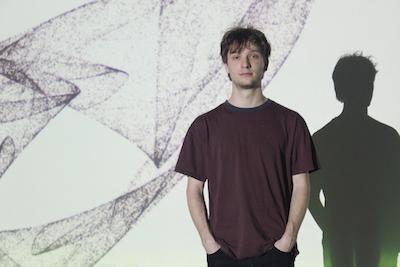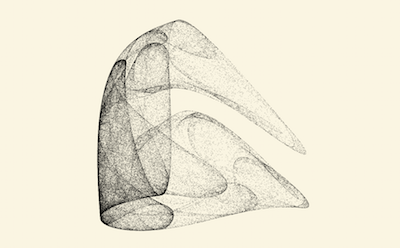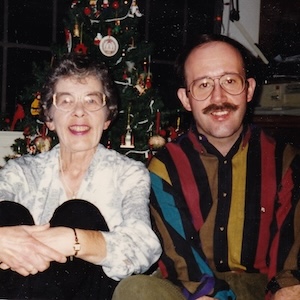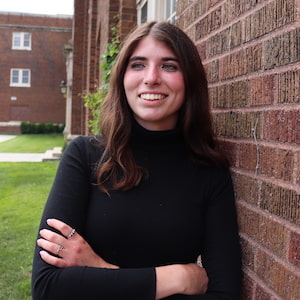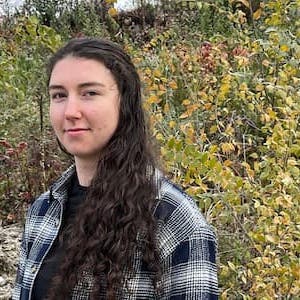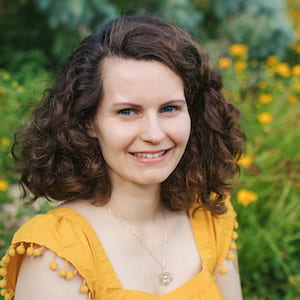Alex Leeds
Five years ago, Alex Leeds had no plans to attend college and waged war with his parents over the issue. This spring, he will graduate from the College of Continuing and Professional Studies with an Inter-College Program (ICP) thematic degree entitled “Creativity and New Media,” along with three minors: Product Design, Computer Science, and Art. He describes what he’s been studying over the last four years as creative theory and interdisciplinary media. These are the questions he asks himself: How do we create, how does science intersect with art, and how can we create new art forms?
What changed for Leeds since he entered the U as a hesitant freshman and is now graduating a creativity theorist?
“I thought I hated school at first, but it was the rigid format I didn’t like,” Leeds says. “I took a year off after my freshman year and began reconceptualizing what school and education could mean for me. Once I discovered ICP, I knew it was what I was looking for.”
Creativity and Cognitive Function
Freedom and creativity fueled Leeds’ pursuits within his ICP trajectory, and he’s delved into an array of creative and ambitious projects, working side-by-side with professors at the U.
Leeds’ work with Professor Barry Kudrowitz in the College of Design, for example, involves the study mind maps as evaluative tools for understanding and researching creativity and cognitive function. “Mind maps have been proven to be more effective than list techniques for brainstorming because they encourage nonlinear thinking,” Leeds says. “They represent how your brain makes associations radially, and this is why we are interested in seeing what mind maps can tell us about creativity.”
Leeds has developed an application for creating digital mind maps and is currently working on a paper summarizing his mind map research. He will be submitting the paper to the International Conference on Design and Creativity in the fall of 2016.
Another of Leeds’ pursuits is a computer-brain interface art project, for which he received an Undergraduate Research Opportunity Program (UROP) grant. He’s working with Professor Diane Willow, who specializes in interactive art, to shape this research.
Translating Brainwaves into Data Visualizations
For the project, Leeds used his coding prowess to write a program that translates brainwaves—generated via an EEG neuroheadset—into sweeping data visualizations. Each data visualization is different because each brain scan yields new and different brain waves, depending on what a subject is thinking. Leeds wants to create feedback loops between subjects and the shifting data visualization their brains create via his program.
“I’m obsessed with feedback loops,” he says. “The mind has its own feedback looping system—the act of thinking about yourself changes yourself. It’s like a dog chasing its tail.”
His obsession with feedback loops ties to his more complex obsession with, well, complex systems, or chaos theory.
Through his work on the computer brain interface and his UROP grant, Leeds wanted to visualize chaos. So, naturally, he wrote another program to do this.
“This part of my research required lots of chaotic equations,” Leeds says. “Only certain equations are chaotic, but there are endless numbers of them. I wrote a program that generates an infinite amount of random equations, then evaluates them for chaos. If it’s chaotic, the program will spit out a unique image to visualize that unique chaotic equation.”
He points to a series of images that appear to be elegant line drawings.
“These images, and chaos theory in general, are beautiful because they reveal our limitations while empowering each and every action, no matter how small,” Leeds says. “Chaos is not randomness or disorder, but rather infinite sensitivity.”
Seeing the Unseen
Leeds wants to paint these images someday. He sees them as alien hieroglyphics—”strange attractors” is what the images are called.
"Once I discovered ICP, I knew it was what I was looking for.”
“I think of these images as landscape portraits of natural systems, taken from a very overhead view,” he says. “These are the processes that essentially underlie everything. I don’t consider them computer-generated; I think of the computer as a window to viewing them. Seeing the unseen.”
Given the scope of his research and projects, it’s easy to see why ICP was the only possible course of study for Leeds, who prefers to cast a wide net when it comes to learning about, and interpreting, creativity. He admits that he feels he’s only just begun to study creative theory and application, and that he’ll likely go on to grad school.
“I wouldn’t have done my best if I wasn’t invested in it,” Leeds says. “Exposing yourself to diverse modes of thinking makes you more aware of yourself. And becoming more aware of yourself changes who you are.”
Another feedback loop, presented to you by a curious and creative ICP student.

